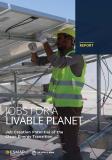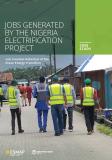Publications

Central American countries have achieved a strong degree of energy integration in recent years, as well as institutional coordination through joint power expansion planning. However, the region's vulnerability to external shocks in the energy sector has increased over recent years. The share of thermal generation in power supply has increased significantly in the last decade, to the point where the rise and volatility of oil prices has a dramatic effect today on the region’s economy. It has become increasingly clear that the region must develop its local energy endowments, leading to a strong interest in renewable energy sources and technologies such as hydropower, geothermal, and wind.
Given its potential in the region, geothermal energy has attracted the attention of policymakers and private investors as a resource to further develop and supplement hydroelectric generation and to reduce dependency on thermal generation. As policymakers consider strategies to promote geothermal development, valuable lessons can be drawn from experience with geothermal power in Central America and other regions.
This report looks at those lessons to identify the challenges associated with development of geothermal generation, including physical, financial, regulatory and institutional barriers. It outlines possible strategies to overcome them at the regional and country-specific level to provide decision-makers a reference document with a regional outlook. This report is addressed to the power sector authorities in the different countries and to the members of the joint planning committee in an effort to illustrate the potential of native geothermal resources, which are shared by many of the countries.
This report is the fourth in a series of studies undertaken by the World Bank to better understand the energy challenges facing Central American countries.



